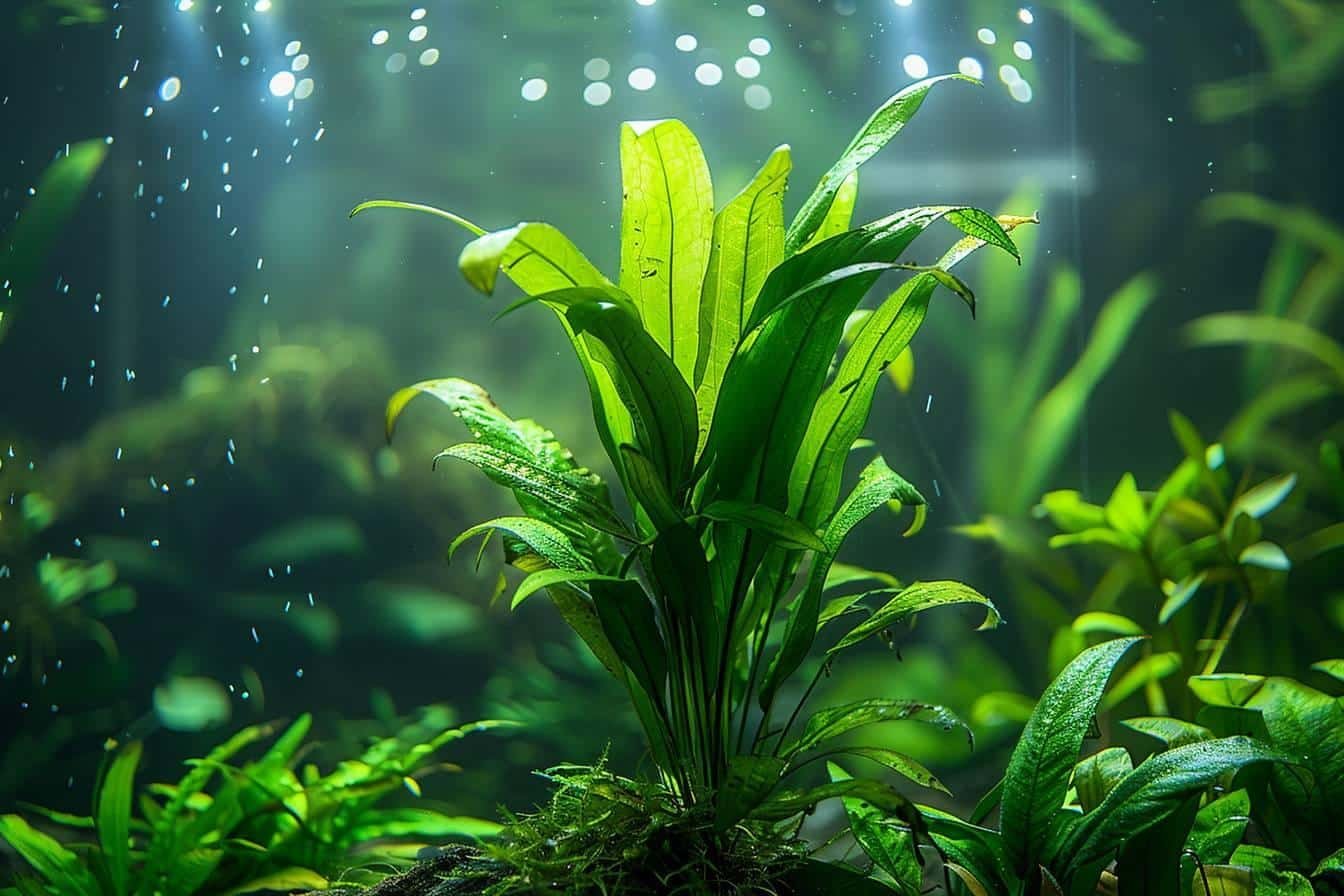The article in brief
Dutch aquascaping, which emerged in the Netherlands between 1930 and 1950, transforms aquariums into veritable water gardens. Here are the key points:
- Concentration exclusive on plantswithout rocks or wood
- Creation of an underwater landscape resembling a flowerbed
- Use of numerous plant species with contrasting colours and shapes
- Requires technical expertise (powerful lighting, CO2, suitable fertilisers)
- Request a regular maintenance and constant monitoring of water parameters
L'dutch aquascaping is a real jewel in the crown of aquaristics. Originating in the Netherlands between 1930 and 1950, this unique style transforms our aquariums into veritable water gardens. As an aquarium enthusiast for over 15 years, I've had the opportunity to explore many techniques, but this one remains one of my favourites. Let me guide you through the secrets of this interesting art.
The basics of Dutch aquascaping
The very essence ofdutch aquascaping lies in its exclusive focus on plants. Unlike other styles, you won't find any imposing rocks or driftwood here. The aim is to create an underwater landscape that looks very much like a well-kept flowerbed. I remember my first exhibition of Dutch aquariums: I was amazed by the beauty and diversity of the plants used!
This style is characterised by :
- Use of a wide range of plant species
- Carefully arranged plant beds
- A focus on contrasting colours, shapes and textures
- A dense plantation covering almost 100% of substrate
The key to success lies in technical mastery. Powerful lighting, a supply of CO2 and the right fertilisers are essential to maintain the health and growth of the demanding plants used in this type of aquarium.
The art of composition
The composition of a Dutch aquarium generally follows a linear reading in three planes. The foreground, middle ground and background are carefully arranged to create visual depth. It's a bit like composing a living painting underwater! I spent hours fine-tuning my compositions, moving a plant a few centimetres to get the perfect effect.
Here is an example of a typical composition:
| Plan | Type of plant | Desired effect |
|---|---|---|
| Foreground | Tapestry plants | Create a uniform base |
| Mid-plane | Medium-leaved plants | Add volume and texture |
| Background | Tall, colourful plants | Providing height and focal points |
Choice of plants
Plant selection is crucial in thedutch aquascaping. Fast-growing, nutrient-demanding species are preferred. Red plants are often used as focal points to attract the eye. Among my favourites are Rotala rotundifolia for its rosy hues and Ludwigia repens for its bright red foliage.
Mastering the technique for stunning results
The Dutch aquarium is not for beginners, I warn you! It requires a good deal of patience and know-how. But it's worth the effort, believe me. Here are a few technical aspects not to be overlooked:
Regular maintenance, the key to success
Pruning plants is a real art in itself. You have to be prepared to pull out the scissors regularly to maintain the desired shape. It's a bit like being the gardener of a French-style mini-park! I've developed a real obsession with perfect pruning, even going so far as to dream about my plants at night (yes, I know, it's a bit crazy).
The interview also includes :
- Frequent water changes (30 to 50% per week)
- Thorough cleaning of the substrate
- Constant monitoring of water parameters
Lighting and fertilisation, the pillars of growth
Powerful lighting is essential to stimulate plant growth. I personally use LED strips specially designed for aquarists, with adjustable intensity. As for fertilisation, it's a real balancing act. Too little fertiliser and your plants will die. Too much and you risk a proliferation of algae. I learned the hard way that it's better to start slowly and adjust gradually.

The evolution of Dutch aquascaping
The Dutch aquarium has been evolving ever since it first appeared in the 1930s. Competitions have been held since the 1960s, pushing aquarists to outdo themselves. I was lucky enough to take part in one of these competitions a few years ago. The atmosphere was electric, with everyone scrutinising each other's aquariums in search of inspiration (and perhaps a little jealousy, let's face it).
Today, thedutch aquascaping continues to inspire many aquarists around the world. It has even influenced other styles, such as the natural aquascaping popularised by Takashi Amano. It's interesting to see how a style born in the Netherlands has conquered the whole world!
An art form in constant evolution
Although faithful to its roots, the modern Dutch aquarium incorporates new techniques and technologies. The use of advanced filtration systems, specialised substrates and even connected monitoring tools means that the limits of this art form can be pushed even further. I'm always amazed by the innovations I discover at aquarium shows.
A challenge worth taking on
L'dutch aquascaping is not for the faint hearted. It takes time, patience and a fair amount of technical knowledge. But the result... oh, the result! When I see my Dutch aquarium in full health, bursting with life and colour, I know that all the effort was worth it.
If you're up for the challenge, the Dutch aquarium offers you a unique experience. It's more than just a hobby, it's a real passion that will push you to excel. And who knows? Maybe one day you too will be dreaming of your aquatic plants at night!
Remember, Rome wasn't built in a day, and neither will your aquatic masterpiece. But with perseverance and a love of your plants, you can create a real underwater garden that will be admired by all. So, are you ready to take the plunge into Dutch aquascaping?
